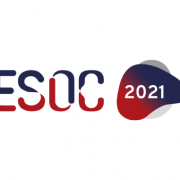ESOC 2018 Highlights – Service Organisation
Chairs – Markku Kaste, Christopher Levi
Many would argue that it is equally as challenging to implement new discoveries into clinical practice as it is to make the discoveries themselves. The recent advances in reperfusion therapy are a prime example of where, in order to realize the opportunity provided to our patients by new evidence, innovation in systems of care and appropriate research and evaluation those systems are vital.
The “Service Organization” session on 16 May highlighted a number of important advances in thinking and strategies for improving systems of care to facilitate evidence adoption.
Dr Rucker on behalf of the German Stroke Registers Study Group, a consortium of 750 hospital engaged in 9 regional stroke care registers, highlighted that where sound evidence exits, measurement and adherence by hospitals to indicators of quality care delivery can result in lower in hospital mortality. Few interventions in stroke reduce mortality and this work highlights the importance of quality registries important to see that the refinement and on-going improvement organized stroke care.
The value of an innovative models of care was highlighted by the Dr Santana and the Val d’Hebron stroke care team with their evaluation of deployment of an expert stroke care nurse and the primary manager of the hyper-acute patient journey from the front door of the hospital to the angiography suite. Not only did this approach improve the efficiency of care with significantly improved door-to-needle and door-to groin times, this new model of care served to support acute stroke research and embedding research into routine care of the patients.
A further innovation was presented by Dr Maurin Soderholm with an evaluation using sophisticated simulation techniques of pre-hospital video-consultation linking EMS clinicians with hospital-based neurologists. The importance of accurate prehospital stroke severity assessment to allow triage to ECR capable centers is now recognized as necessary in some geographical settings and this approach will also facilitate pre-hospital therapeutics in situations such as mobile stroke units.
The air transport option is becoming increasingly used in situations where populations are geographically dispersed however, the cost-benefit of air transport has not been well evaluated. Dr Flynn, on behalf of the north of England presented cost-benefit modelling demonstrating that air transport can be a highly cost-effective model of care.
The importance of improving workflows was also a major focus of this session. Inter-hospital workflow optimization was emphasized by the analysis presented by Dr Purrucker from Heidelberg, Germany where using e-ASPECTS with non-contrast CT, significant increases in extent of infarction and less favorable clinical outcomes were associated with longer inter hospital transfer times. Intra-hospital workflows was the focus of the work presented by Dr Treurniet and the group form Amsterdam demonstrating that implementing a set of workflow streamlining initiatives in patent requiring ECR was able to shave-off an average of 30 minutes from the door-to-groin times.
The overall message of this session was that well organized service models not only improve the outcomes for patients but are also cost-effective. Given the increasing burden of stroke globally, systems innovation and improvements will be vital in addressing this problem.


